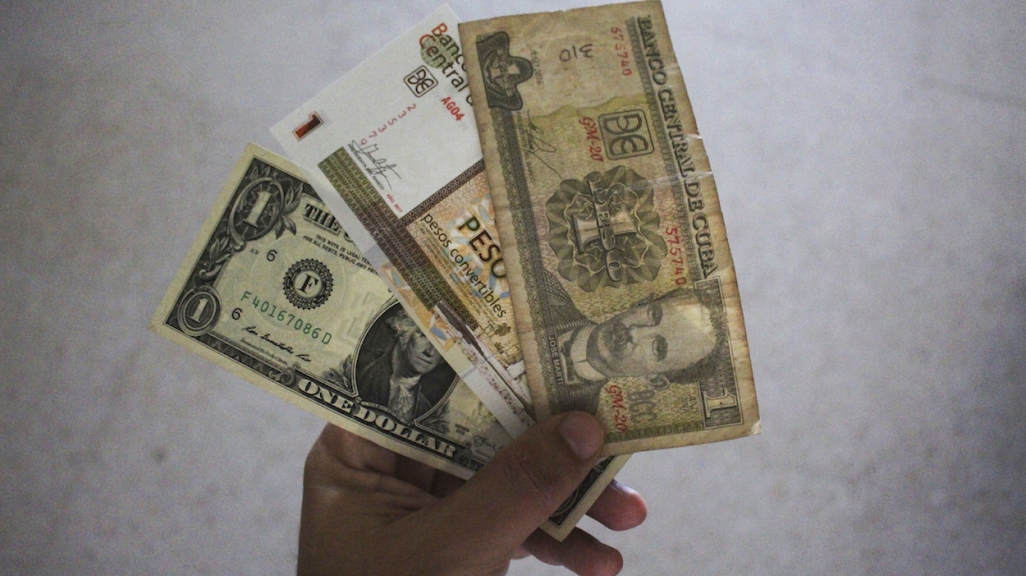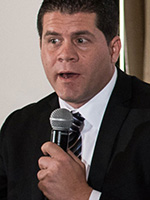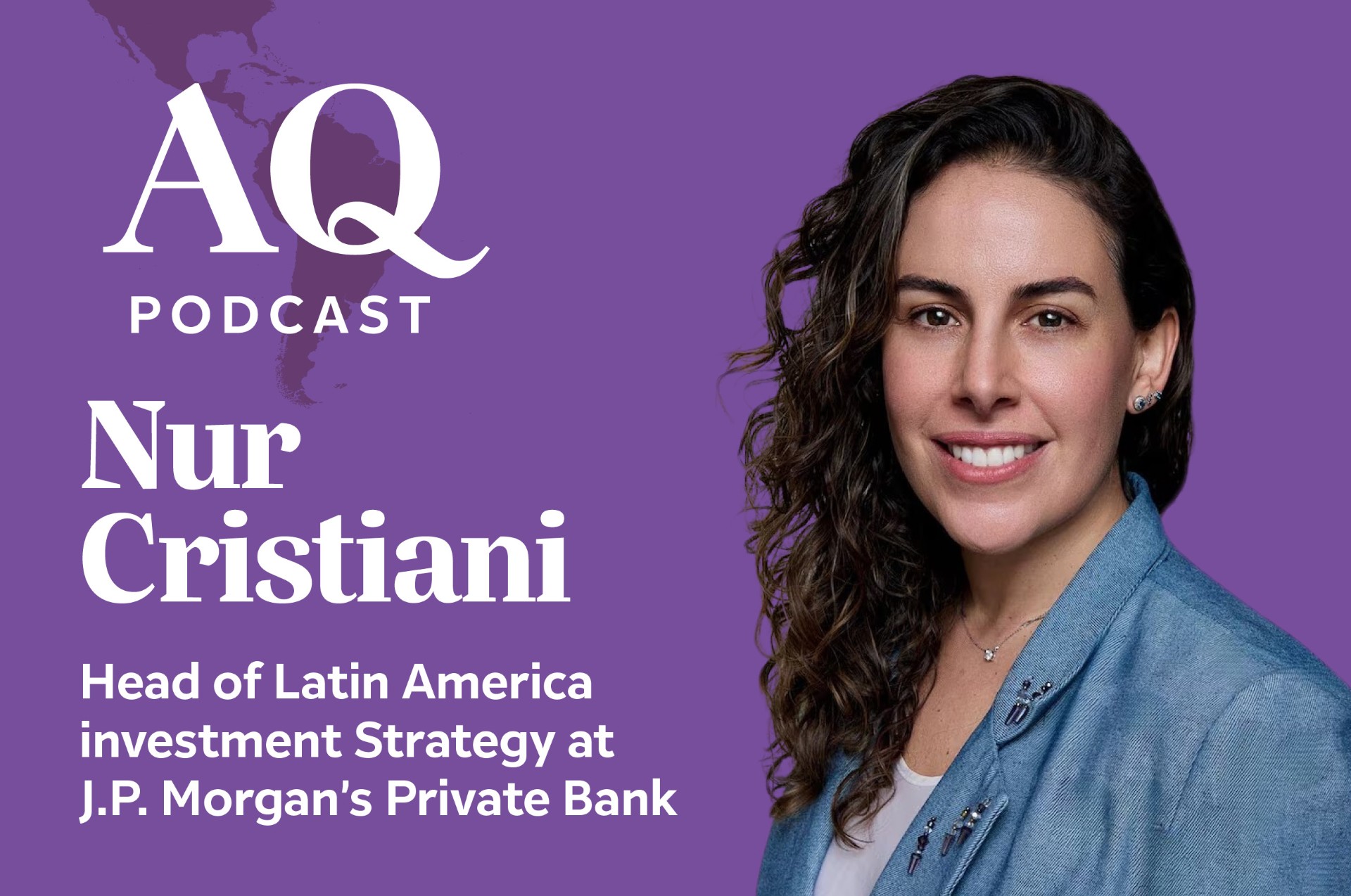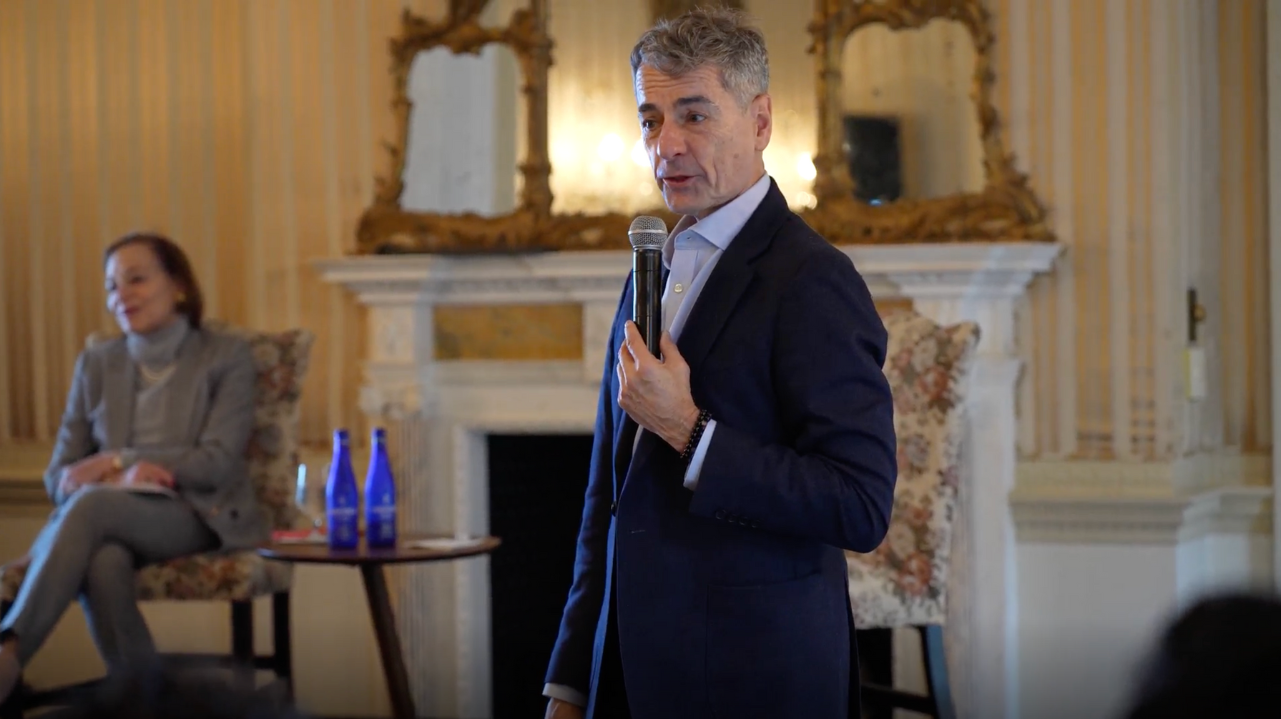Q&A: Economist Ricardo Torres on Cuba's Monetary Unification
Q&A: Economist Ricardo Torres on Cuba's Monetary Unification
“This is a necessary step and, unfortunately, we are now doing this in the worst possible situation,” said the Cuban economist on the January 1 currency shift.
The new year brought with it a long-awaited change in Cuba: monetary unification for the island’s ailing economy. Before January 1, dubbed Día Zero (“Day Zero”), three currencies circulated: the Cuban peso (CUP), the convertible peso (CUC), and the U.S. dollar (USD). Now there will be no convertible pesos, which Cubans have six months to exchange, and there will be a single CUP-to-USD exchange rate across all sectors.
The change is one economists have long advocated as being necessary to kickstart reform of the stagnant, centrally planned economy that saw an average GDP growth rate of 2.3 percent since 2010. But in the midst of a pandemic and estimated 8 percent contraction in 2020, the adjustment comes “in the worst possible situation,” Cuban economist Ricardo Torres told AS/COA Online’s Elizabeth Gonzalez.
Torres, a professor of economics with the Center for the Study of the Cuban Economy at the University of Havana, spoke with AS/COA Online’s Elizabeth Gonzalez on January 5 and explained what the currency unification means in practical terms, the government’s goals in taking this step, and the structural reforms still needed to make those goals reality.
Elizabeth Gonzalez: Before January 1, there were three currencies circulating in Cuba. The Cuban Peso, known as el chavito or CUP, the Cuban Convertible Peso or CUC, and the U.S. Dollar. But now in the new year, there is only the Cuban peso and the dollar—no more CUC. Can you explain what this means in practical terms for the Cuban population?
Ricardo Torres: This has been a long overdue reform as part of the overall process of actualización, as it is known in Cuba, which began in 2011. It is a very complex process. People will have to, within the next six months, change their CUCs at the same exchange rate we’ve been using for the last 15 years or so: 24 pesos for each CUC. That’s a major implication, and we can see people queuing up at exchange houses to get rid of those CUCs.
Another is that all prices will go up. The government has already announced the changes in prices and tariffs for public services and goods that are sold by state entities—from utilities to all the goods that are provided through the rationing card.
The reasons for the price changes are threefold. One is that they will now reflect, to some extent, the devaluation of the Cuban peso in the state sector where we were using a 1-to-1 exchange rate: 1 CUP = 1 CUC = 1 USD. Now there will be a unified exchange rate for all sectors of the economy set to 24 Cuban pesos for each USD.
That devaluation will be transferred to prices, which reflect two other processes. One is, as part of the monetary reform, state firms and public services will have to accommodate bigger salaries. Another modification is the scaling back of some, if not all, subsidies. Before we had a situation in which the government subsidized—in some cases, heavily—some products, such as utilities and the rationing card. With subsidies cut off, prices will go up to reflect a more normal operation of the economy. Already people are seeing prices rise.
A positive note is that those who have a job in the public sector will see an increase in their wages. But people in the private sector have a more unpredictable situation because those wages are not guaranteed by the state. There is no provision in the central budget to make resources available for the private sector to pay higher salaries. Private firms can only pay higher salaries if they produce, if they have revenues to pay for those salaries. Then we have a third group, which is in a more precarious state and includes people who don’t have a formal job either in the public or private sector. For this group, the cost of living will go up and they will not have automatic compensation coming from wages. I would say this is one of the critical points of monetary reform.
Gonzalez: Do we know what proportion of the labor market is informal?
Torres: We don’t have an accurate estimate of that, but we have some ideas. A widely used indicator in economic analysis is the rate of economic activity. Essentially, it’s the proportion of the working-age population that has a formal job. As a norm, you want that to be the highest possible. It’s never 100 percent for a variety of reasons. In Scandinavian countries, which are the best standard in this regard, that rate is around 80 percent. That rate right now in Cuba is 65 percent, meaning essentially two-thirds of your working-age population has a formal job. That has decreased more than 10 percent in the last 10 years, even as the private sector created jobs. It’s very concerning because you have a significant portion of the population that could become very poor with this change.
Gonzalez: Do you have an estimate for how much prices of goods will go up?
Torres: This is a controversial issue, and the truth is that we haven’t had a good estimate of inflation in the last few years. We know that the indicator that is used and calculated by the National Statistics Office does not reflect the reality or the dynamics of prices in the actual economy. What the government has indicated is that they expect prices in the public sector to go up 1.6 times, and in the private sector, to go up three times. All prices in the economy will go up, but some prices are more important. We can think of food, for instance, which is a significant proportion of family expenses.
The risk that we see here is that inflation may be higher than what the government is projecting. But there are so many factors that affect prices, including expectations, that right now it’s very hard for me to come up with a number.
Gonzalez: Ever since Raúl Castro announced a series of economic reforms in 2013, Cubans have been waiting for Día Zero to arrive. What is the government trying to accomplish?
Torres: That’s one of the key questions. I can think of three major goals. Let me mention them by order of importance according to what the government has indicated in public media.
The first goal is the government wants to change what we call relative prices, essentially the relation of prices, and they have one main target. Because of the artificial over-evaluation of the Cuban peso relative to the U.S. dollar by using the 1-to-1 exchange rate in the public sector, imported goods were artificially cheap relative to goods produced domestically. So state firms were incentivized to buy imported goods because it was better for them in terms of preparing their accounts, and then out of that you calculate your profits, and you can appear to be a more profitable firm, meaning that you could also distribute more bonuses to your employees. The government wants to change that relation in prices that was artificial. And then by doing this, over the coming months, firms will realize that national products are cheaper than imports. I have to say, as an economist, that is the right goal. Cuba is an open economy and needs to rebalance its balance of payments and it has to switch on its domestic productive sector.
The problem is that this process will not be automatic for at least two main reasons. One is that the exchange rate was definitely a factor behind the way Cuban firms were doing business, but it was not the only factor. The government will need to change other things in the economic model so that firms behave differently, become more efficient, and increase productivity. And that’s what we call other structural reforms: changing the way state firms are managed and make decisions, which remains relatively bureaucratic. The other reason is that, even if domestic firms want to produce more, they will face restrictions. Some of them will need to invest at least a little bit to restart production. Some will have to buy imported inputs to produce. Then you have the logistics problems within Cuba. Plants, firms, businesses, need time to adjust and to increase production, which is the major goal.
The second goal is that using only one exchange rate throughout the economy and one currency will improve transparency in economic indicators and national accounts. If you have data, you can make good analysis and make informed and better decisions.
The third goal is more implicit and is connected to what I said about the dropping rate of economic activity. By increasing the cost of living and increasing the opportunity cost of leisure time, you send a signal to the labor market, to those who are not working, and the signal is: “You better work, otherwise it’ll be very difficult for you to sustain your standard of living.” Of course, it’s a more complex issue, and that goes back to “Why do some people not work in Cuba?”
Hablamos con emprendedores sobre el impacto de las medidas que han tomado los gobiernos de los Estados Unidos y de Cuba.
Gonzalez: This is coming at a time that is very complicated for Cuba, where the economy has been weakened not only by the pandemic—the drop in tourism, in economic activity—but also from years of a Venezuelan crisis that has resulted in cuts to oil shipments. How does this change interact with everything else that’s going on?
Torres: I think this is on the mind of most Cubans, especially those who are on the island. The government faces a dilemma with this transformation, which is that all the difficulties and pain will come immediately, but the positive effects will only come over time, and, as you said, it’s pain over pain, because the economy was already in trouble. The good things, if they come at all and which are contingent on the government introducing further changes, will only come over the medium to the long term. It’s a classical problem of intertemporal allocation of pain and relief.
Frankly speaking, there is a debate in Cuba. Many of us, we’ve been advocating for a long time, saying this is a necessary step and, unfortunately, we are now doing this in the worst possible situation. During 2020, everything that could go wrong went wrong. Who could have predicted the COVID-19 pandemic? Nobody. But we have to compare it to the alternative: What if the decision would have been to wait a little more? The truth is that our economy needs a big reshuffle and this is a big part of that reshuffle.
My criticism right now would be two-fold. Obviously after carrying out studies and research for five years, the state assembled teams to prepare for the monetary unification. Looking at the first impacts, it seems there was a bit of improvisation. Some calculations were not necessarily accurate, in my opinion. We can mention for instance what happened with electricity prices. It leaves us with a bitter taste. We’ve delayed this for a long time saying that we need to be ready and make sure that all the pieces are in the right place. And when time came to implement it, it seems that too many adjustments have been made only after five days of beginning the implementation. I’m not saying that given the complexity of this process, adjustments are not to be expected. But when it came to prices, there have been too many adjustments.
My other big criticism is on the sequence. We’ve been advocating for structural reforms aimed at changing the way state firms are managed, changing their role in the economy, and giving more room to the private and the cooperative sector so that they are able to create jobs and function as an anchor for the economy. If we are serious about the restructuring of state firms, it means that it will eventually destroy jobs, and those jobs will need to be created elsewhere, and that elsewhere is the private sector. If those reforms had been carried out in the past, the economy would be by now in a better position to accommodate the impact and the shock arising from the monetary reform.
Gonzalez: And if you had to choose one, what do you think is that reform that the government needs to follow up with most immediately in order for this to turn out for the better?
Torres: There are three or four major things that we need to do, and of course there are many other minor changes that will complement this core change. One we already decided: monetary reform. And let me tell you, monetary reform will continue, because 24-to-1 is not the equilibrium exchange rate. If we cannot buy dollars for any other foreign currency at the state banks using the 24-to-1 exchange rate, that tells us very clearly that it’s not the equilibrium exchange rate. We don’t have convertibility yet of the domestic currency, so people that want to buy U.S. dollars have to go to the black market. The government said it during sessions they broadcast to explain the process. [Head of the Permanent Commission for Implementation and Development] Marino Murillo himself said, “There will be other devaluations in the future.”
Gonzalez: So banks in Cuba right now will not convert any pesos into dollars?
Torres: No.
Gonzalez: Did they say when they would do that?
Torres: No, they didn’t.
My opinion is that it will be quite a long time before they are able to sell dollars, unless they devaluate the currency further. Cuba faces a deep scarcity of foreign exchange. Therefore, the little foreign exchange the government has, it cannot afford to sell to the public, because it needs that foreign exchange to buy essential goods, medicines, fuel, and pay its debts. It’s not going to happen any time soon unless you decide to let the peso float. And that would be a scary number—a number I think the Cuban economy cannot absorb right now—because it will destroy a significant amount of state firms and employment in general, and we cannot afford that.
Gonzalez: In stores, are prices in U.S. dollars or in pesos?
Torres: There are shops that sell goods nominated in U.S. dollars and then there are other shops that sell goods and services in Cuban pesos. All utilities are nominated in Cuban pesos.
Gonzalez: This has been very informative, thank you.
Torres: It was a pleasure.
Editor’s note: This interview has been edited for length and clarity.











